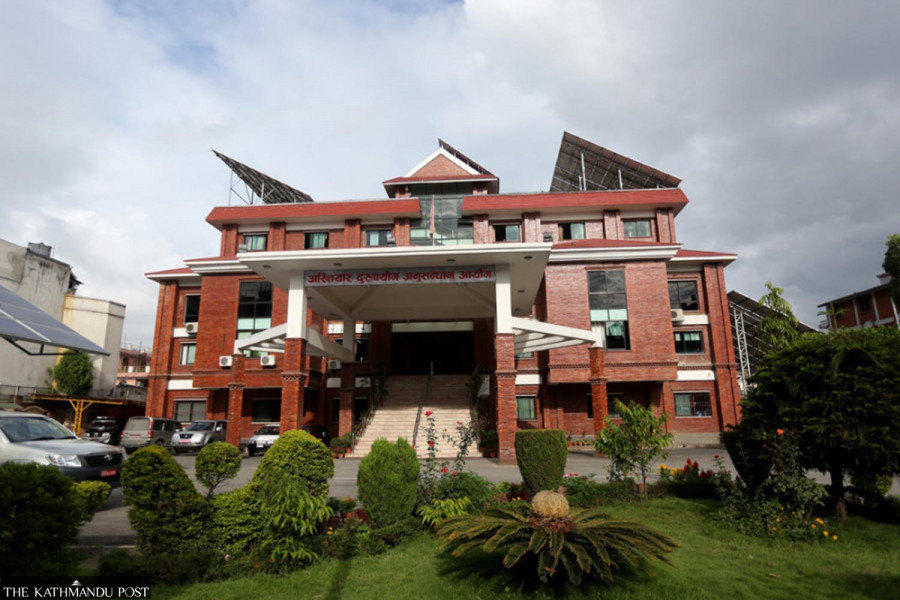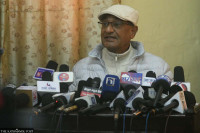National
CIAA challenges Special Court’s clean chit to ex-minister and 20 others
Anti-graft body claims evidence was ignored to exonerate those accused of corruption in Sikta Irrigation Project.
Prithvi Man Shrestha
The Commission for Investigation of Abuse of Authority (CIAA) on Tuesday moved the Supreme Court challenging the Special Court verdict that gave clean chit to 21 accused, including ex-minister Bikram Pandey, of corruption in the construction of Sikta Irrigation Project.
On June 19 last year, the Special Court acquitted all 21 accused including lawmaker Pandey, who chairs Kalika Construction that built the main canal, and government officials.
While exonerating them of corruption, the court pointed out that the defendants were not aware of ‘dispersive soil’ while conducting feasibility study, preparing design, signing contract agreement and constructing the canal.
The ‘dispersive soil’ issue in certain parts of the canal came to light following a soil test after a part of the canal collapsed in December 2016 for the first time, the Special court had said in its verdict.
However, the CIAA has argued in its appeal that the existence of such soil was long known because past studies had already indicated its presence.
In a statement, the anti-graft body said that a feasibility study report of the main canal by the Lahmeyer International GMBH in August 1980 had mentioned the presence of dispersive soil in the area between the Parwa Sota and Dunduwa Khola tributaries.
According to the CIAA, the feasibility report pointed at the need for a lining solution since the permeability of the sandy silt (10-4 cm/s) was too high to tolerate seepage losses and the sandy soil was so highly erodible that within a short time the canal would be destroyed by the flow of water into it.
The main report of another feasibility study prepared in April 2004 had also clearly indicated the presence of loose soil.
Page 62 of the report under the heading “Topography and Land Systems along the Main Canal Alignment” states that “From the Paruwa Khola at chainage 20+600 onwards upto the Dunduwa River at chainage 35+600, the canal traverses a highly dissected alluvial fans with a loamy soil top layer and substratum of highly compacted silt and loam soils.
“These soils have variable calcium content and are subject to leaching. Because of the dissected nature of topography in this reach, deep cuts upto 17 metres will be required for canal excavation alternated with canal sections constructed in fill. Although the compacted loamy and silt soils are stable for excavation, the probability of leaching will require protection of slope in deep cuts.”
The anti graft body said a detailed study should have been conducted based on these feasibility studies.
“It is clear that the design cost estimate and tunnel structure with concrete lining were prepared after learning about the quality of soil,” the CIAA argued. “Otherwise, there was no need to prepare the structure with concrete lining.”
The anti graft body said that the verdict was wrong because this evidence was not taken into consideration.
“We have registered an appeal at the Supreme Court with a lot of evidence as to why the Special Court’s verdict is erroneous, “said Bhola Dahal, CIAA spokesman.
On December 7, 2018, the CIAA filed a corruption case at the Special Court against Pandey along with other 20 individuals for substandard construction that led to repeated collapse of the main canal of the multi-billion-rupee national pride project.
Others accused in the case were project chiefs in different times—Sarva Dev Prasad, Saroj Chandra Pandit, Dilip Bahadur Karki, and Ramesh Basnet—and nine senior divisional engineers as well as engineers with the Department of Irrigation and managing director of the project consultant ERMC-ITECO Nepal JV.
According to the anti-graft body, Geotechnical and Associates Pvt Ltd. Bokhundole, Lalitpur, Nepal in December, 2016 had concluded after a soil test that the soils along the main canal site chainage 17+700 and 35+000 are made up of intermediate to highly dispersive clay. As discussed earlier, construction in this type of soil leads to leakage/seepage and piping, resulting in failure.
Likewise, other reports prepared by the then joint secretary at the Ministry of Energy, Water Resources and Irrigation Sagar Kumar Rai in August 2016 and by the then deputy director general of the Department of Irrigation Krishna Belbase in February 2017 also reached the same conclusion, according to the CIAA statement.
The CIAA claimed that the court’s giving the accused clean chits based on the statements of the staffers of the Department of Irrigation and the Ministry of Irrigation was wrong because that would involve a conflict of interest. According to the anti-graft body, the Special Court should have taken statements from independent experts from universities and research institutions since geotechnics was crucial for arriving at a conclusion on the matter.
In its 55th annual report, the Office of the Auditor General stated that despite the clear presence of dissoluble soil on the surface, its identification, analysis and treatment were not conducted before constructing the canal. Both time and cost of the national pride project have been on the rise due to different problems including problems appearing in the soil.
When the project was initiated in 2005-06, it was supposed to be completed by 2014-15 at an estimated cost of Rs12.8 billion. The deadline was later extended till the end of fiscal 2021-22. By the time it is fully operational, the project is expected to cost Rs25.02 billion, according to a mid-term review of the budget for current fiscal year 2022-23.




 9.12°C Kathmandu
9.12°C Kathmandu













%20(1).jpg&w=300&height=200)

